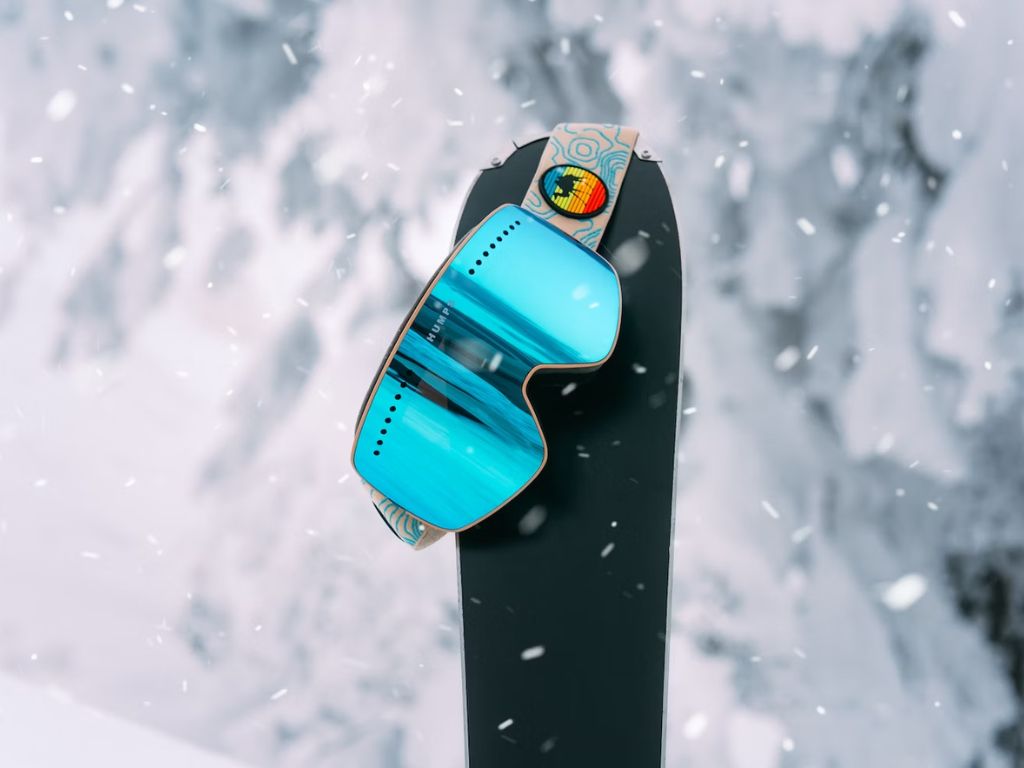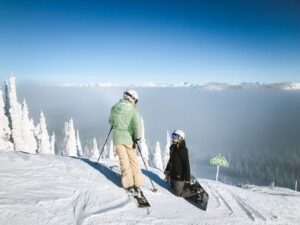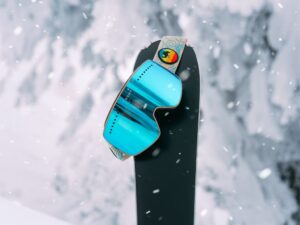I don’t know about you, but I’ve had my fair share of icy encounters on the slopes.
Picture this – you’re all geared up, ready to hit the powder, and suddenly, you find yourself on a slippery, icy slope that seems more like an ice-skating rink than a snowboarding paradise. It can be unnerving, to say the least.
But fear not! Over my years of snowboarding experience, I’ve learned a thing or two about tackling icy conditions like a pro. In this article, I’ll share some fantastic tips and techniques that have saved my snowboarding sessions countless times.
If you’re in a hurry, here’s a quick answer:
Technically, you should slow your board down and focus on maintaining your balance by shifting the weight to your core (center) when riding on ice. It’ll help you navigate your snowboard much better in icy conditions, albeit a little slower than your usual speed.
Ready to shred the ice? Let’s dive in!
Techniques for Snowboarding on Icy Slopes
Let’s dive into the juicy part – the techniques that will turn you into an icy slope conqueror! Remember, the key to snowboarding on ice is all about adaptability and finesse.
1. Proper Body Position and Balance
- Keep your knees slightly bent and your weight centered over the snowboard.
- Lower your center of gravity to improve stability and control on the slippery surface.
- Use your arms for balance, keeping them slightly outstretched.
2. Edging Techniques
- To maintain a grip on icy slopes, engage your edges firmly into the snow during turns and stops.
- Use the toeside edge for turning the heelside, and vice versa.
- Gradually increase edge pressure to avoid sudden slips.
3. Carving on Ice
- Carving involves making smooth, arcing turns on your edges.
- Initiate the turn from your knees and hips, allowing the snowboard to follow a natural arc.
- Avoid skidding or abruptly changing directions, which can lead to losing control.
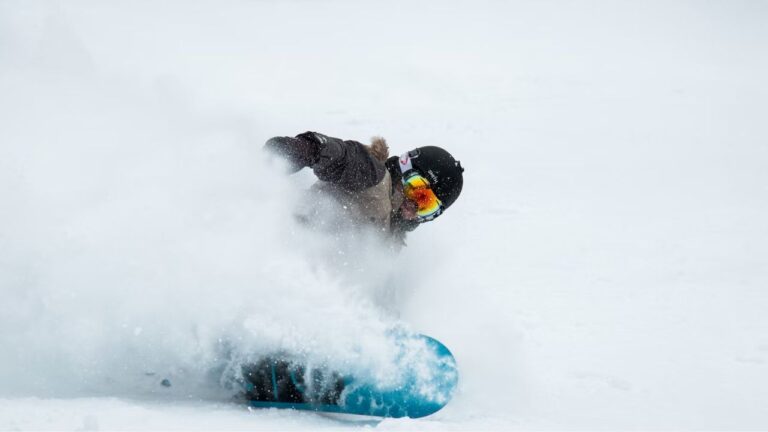
Icy Snowboarding Slopes: How does this happen?
Icy conditions occur when the snow on the slopes has been compacted and frozen due to various factors, such as fluctuating temperatures or heavy skier traffic.
This freezing process creates a smooth, glass-like surface that can be incredibly slippery and tricky to navigate.
One of the biggest challenges with icy conditions is more traction and grip. Your snowboard’s edges may need help finding purchase on the hard surface, making it harder to control your movements and increasing the risk of slips and falls.
Safety Tips for Snowboarding in Icy Conditions
Safety is paramount when it comes to snowboarding, especially in icy conditions. Here are my two cents to keep you safe:
- Know the Conditions: Check weather reports beforehand and mentally prepare if the forecast predicts icy conditions. More importantly, know the difference between icy conditions and straight-up bad weather.
- Start Slowly: Warm up and build confidence before attempting more challenging slopes.
- Stay Alert: Look for icy patches and hazardous areas on the slopes. Be cautious around shaded spots, as they are more likely to be icy.
- Avoid Over-Speeding: Maintain a controlled speed that allows you to react to any unexpected situations.
- Buddy Up Snowboard with a friend or in a group, so you can look out for each other and offer help if needed.
- Take Breaks: Take regular breaks to rest and recharge, as it can be physically demanding. Always listen to your body in these conditions.
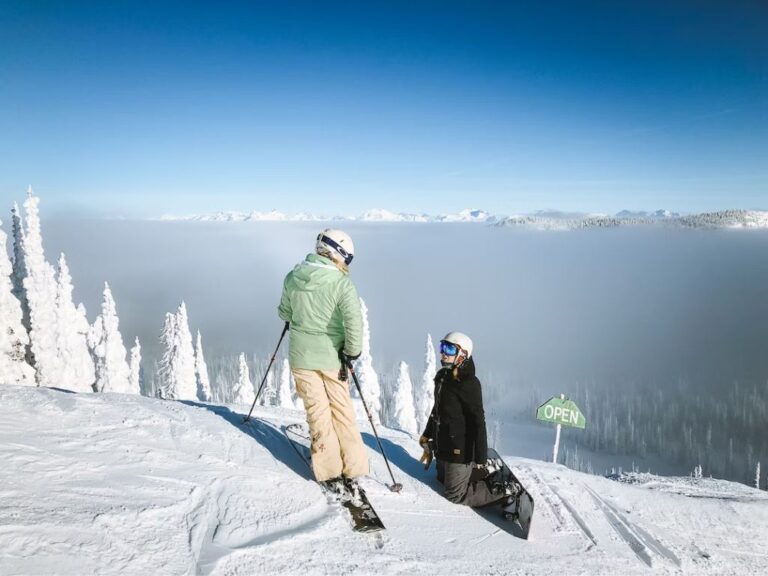
What are some exercises suitable for icy conditions?
Practice exercises focusing on edge control and balance to enhance your skills for icy conditions.
Spend time practicing short-radius turns, carving drills, and quick edge-to-edge transitions.
Work on maintaining a low center of gravity and evenly distributing your weight between both feet.
Additionally, off-snow exercises like core workouts and balance training can help you build the strength and stability needed to tackle icy slopes with confidence.
Expert QnA
Q. How can I tell if the slopes are icy before heading out?
Before you hit the slopes, watch weather reports and resort updates. Icy conditions are often more prevalent during colder temperatures and early mornings when the snow freezes overnight. Check for mentions of icy conditions or grooming reports from the ski resort.
Q. What type of snowboard works best in icy conditions?
Ideally, snowboards with a stiffer flex and effective edge work best in icy conditions. Look for models designed for all-mountain or freeride riding, as they perform better on icy terrain. Camber and hybrid camber profiles can provide better edge grip on ice than rocker boards.
Q. How do I maintain an edge grip on icy slopes?
To maintain an edge grip on icy slopes, focus on your technique. Engage your edges firmly into the snow during turns and stops. Use your knees and hips to initiate smooth, controlled movements. Remember to distribute your weight evenly and avoid excessive leaning.
Q. Should I wax my snowboard differently for icy conditions?
Generally, freshly waxed snowboards work better in icy conditions. Choose a harder wax that is formulated specifically for icy or cold temperatures. This type of wax provides better durability and helps reduce friction on the slippery surface.

